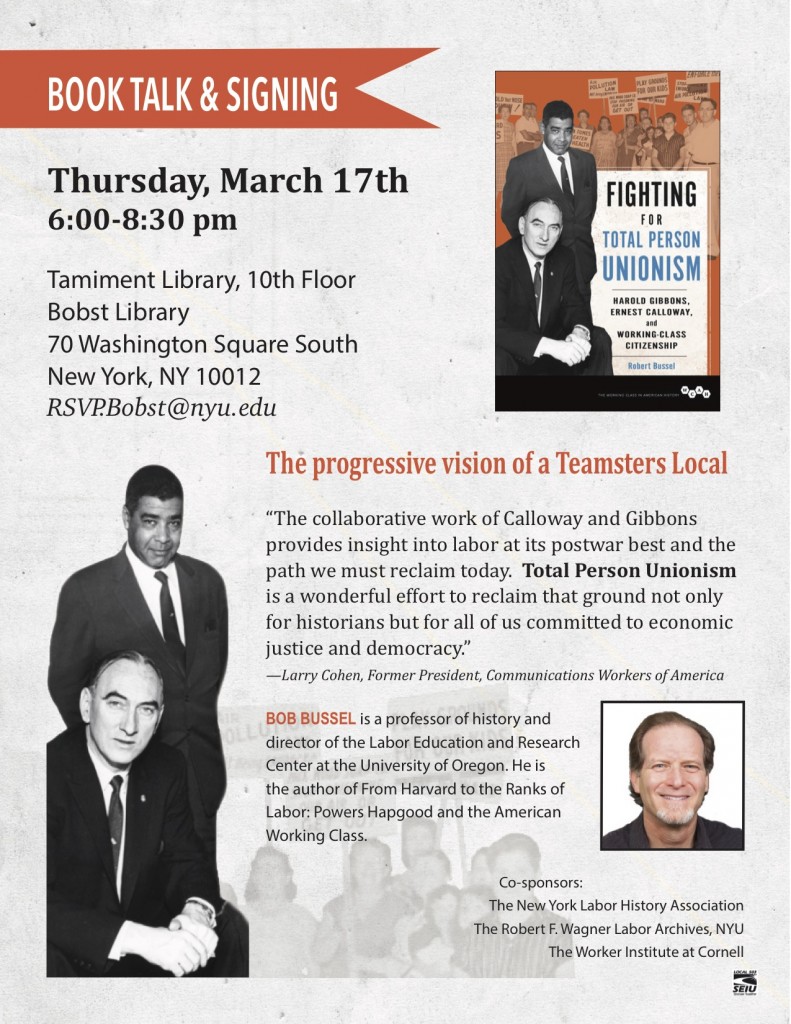Who is John Commerford?
Who is John Commerford, for whom our labor education awards are named? He has largely been forgotten even though he was the major leader of the first labor movement in the United States, in the 1830s. Commerford headed the General Trades’ Union (GTU) in New York City, which brought together the unions of skilled workers, and he was a major figure in the National Trades’ Union that sought to unify unions on a national level. Commerford did not have the benefit of major prior unionization, and thus much of what he accomplished was a new response to a new situation. The labor movement of the 1830s was wiped out by the financial panic of 1837. An even larger labor movement in the 1860s collapsed in the Depression of 1873. It was only in the 1880s that a labor movement was established for good.
Commerford also stressed education as necessary for empowering workers. It was to be free public education and would in his mind allow workers to learn their own worth and the truth about the economic and political system so they could make necessary and significant reforms.
He ran for the U.S. Congress from Manhattan’s Lower East Side on various third-party tickets, including the Republican and People’s Party lines in 1860. He also ran for Mayor of New York City, advocating land reform.
The Commerford Awards are intended to restore his historical standing, and to continue his work in labor education.
An Historian’s Comments
“John Commerford was the most energetic and respected of the GTU leaders and was destined to be a leading figure on the New York radical scene for decades to come. He began his career in the late 1820s as a journeyman cabinetmaker in Brooklyn; in 1830, he joined an Owenite Working Men’s group and campaigned for its nominees in the fall election. After moving to Manhattan the following year, he joined the agitation against the Bank of the United States and state prison labor. In 1834, the newly established Journeymen Chairmakers’ Society elected him its president and delegate to the GTU convention. Described by a contemporary as an extraordinary speaker, Commerford immersed himself in union business, served on over three dozen GTU committees, and represented the New York labor movement at meetings and rallies from Newark to Boston. In 1835, he was elected to replace Ely Moore as president of the GTU, and he remained at the post until the group collapsed. His speeches and his articles in the GTU newspaper The Union (which he also found time to edit) revealed the most searching mind in the union movement. In sympathy with the anti-evangelicals, he mocked pious reformers, those “jugglers” who tried to distract wage earners from the material sources of their plight. Eventually, he picked up the labor theory of value to expose a range of problems, from workshop exploitation to the evils of unfair distribution of the public lands.”
[From Chants Democratic: New York City and the Rise of the American Working Class, 1788-1850, by Sean Wilentz, the George Henry Davis 1886 Professor of American History at Princeton University]
In Search of John Commerford
While our Association has long honored the name and public activities of John Commerford, we knew little about the man behind the name. Recently, and with the assistance of Prof. Wilentz, we learned that Commerford was born in Hackensack, New Jersey in 1800, was married to Maria, had a son named Charles, and died in New York in 1878. His final resting place was an unmarked gravesite in Brooklyn’s Green-Wood Cemetery, but thanks to the cemetery’s historian a marker has been installed (see photo) recognizing John Commerford as a “Pioneering Labor Leader.” The gravesite is located at Section 167, Lot 16300, near the Ft. Hamilton Parkway cemetery gate.
We also were able to trace the Commerford family tree and make contact with a living descendant, a great-great-granddaughter, and were delighted when she attended the 2023 John Commerford Labor Education Awards event.



